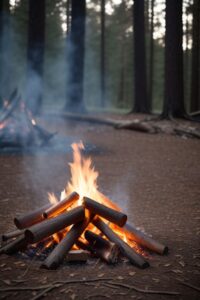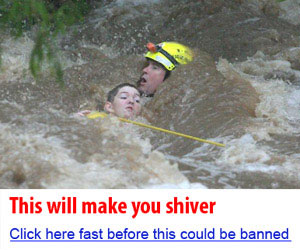How to Start a Fire with No Matches? – Unleashing the Survivalist Within
Lost in the wilderness, the sun is setting, and temperatures are dropping rapidly. Your survival depends on a single skill – starting a fire without matches.
Mastering this primitive yet essential art could mean the difference between life and death. It’s not just about warmth and cooking food; it’s about signaling for help, purifying water, and keeping predators at bay.
This is your ultimate guide to kindling flames from nothing but your surroundings. We’ll explore various techniques, from friction-based methods to the use of everyday objects. Each method is an adventure in itself, a testament to human ingenuity and resilience.
So, are you ready to unlock the secret of fire-starting and step into the shoes of our ancestors? Let’s ignite your journey into the fascinating world of primitive fire making.

“Can sunlight start a fire?”
Indeed, sunlight can be harnessed to start a fire, even when you don’t have matches. This method, often referred to as solar ignition, relies on the principle of focusing sunlight to generate heat. You’ll need a lens or something similar to concentrate the sun’s rays into a small, intense spot. This could be a magnifying glass, a piece of clear ice, or even a water-filled transparent plastic bag.
Solar ignition is a practical skill for survival situations, but it does require patience and the right conditions. The sun must be shining brightly, and you’ll need a tinder that can catch a spark easily. Dry grass, leaves, or small twigs are ideal for this.
Here’s a simple step-by-step guide:
1. Find a sunny spot and place your tinder in it.
2. Hold your lens above the tinder and angle it until you concentrate the sunlight into the smallest possible spot on the tinder.
3. Keep the lens steady and wait. It might take a few minutes, but eventually, the concentrated sunlight should ignite the tinder.
Remember, safety is paramount. Always have a plan to extinguish the fire quickly, and never leave it unattended. Sunlight may be a natural and readily available resource, but it’s powerful enough to start a fire, so it must be used responsibly.
What is a fire plow?
A fire plow is an ancient method used to create fire, especially in situations where matches or lighters are not available. It involves the use of a stick and a flat piece of wood. The stick, also known as the spindle, is rapidly moved back and forth in a groove made on the flat wood, creating friction. The heat generated from this friction can ignite tiny wood particles, forming an ember.
- Selection of Wood: The selection of wood is crucial in this process. The spindle and baseboard should ideally be made of softwood. Cedar, willow, or poplar are commonly used.
The fire plow technique requires patience and practice. The process of rubbing the spindle against the baseboard must be done swiftly and consistently to generate enough heat. Once an ember is formed, it is carefully transferred to a bundle of dry, fibrous material, known as a tinder bundle. A gentle blow can then fan the ember into a flame.
The fire plow method is not only a survival skill but also a testament to human ingenuity and adaptation. It is a reminder of our ancestors’ resourcefulness and their ability to harness the power of nature. The fire plow technique is still taught in survival courses today, highlighting its enduring relevance.
How does a fire piston work?
A fire piston, a primitive fire-starting technology, operates on the principle of rapid compression heating. When you quickly compress a small amount of air, the temperature inside the piston rises dramatically. This heat is enough to ignite a piece of tinder placed inside the piston.
Here’s a step-by-step guide on how to use a fire piston:
- Prepare your tinder. This could be a piece of char cloth, fungus, or other fine, dry, combustible material.
- Place the tinder into the end of the piston.
- Quickly push the piston into the cylinder. The rapid compression should ignite the tinder.
- Remove the piston and carefully transfer the glowing tinder to a larger piece of fuel to start your fire.
The fire piston is a handy tool for wilderness survival and primitive camping, as it doesn’t rely on matches or lighters. However, it does require some practice to use effectively. It’s essential to have the right kind of tinder and to compress the piston quickly enough to generate the necessary heat. The fire piston is an excellent example of how understanding basic principles of physics and nature can help us master the art of fire starting without matches.
“Can friction create fire?”
Yes, friction can indeed create fire. This concept is crucial when learning how to start a fire with no matches. The friction method, also known as the fire plow technique, is one of the most primitive and effective ways to start a fire. It involves rubbing two sticks together until the heat generated by friction ignites a spark.
The first step in this method is to find a dry, softwood stick and a flat piece of wood. The stick, often referred to as the fire stick, is rapidly rubbed against a groove in the flat piece, generating heat due to friction. As the temperature rises, tiny pieces of wood begin to smolder, eventually creating a spark.
• The key to this method is patience and persistence. The process can be laborious and time-consuming, but with consistent effort, the spark will eventually catch.
The friction method is just one way to start a fire without matches. Other techniques include the use of a magnifying glass to focus sunlight, or striking flint against steel to create sparks. However, the friction method remains popular due to its simplicity and the availability of materials in most natural environments.
Remember, starting a fire without matches is a valuable skill, especially for outdoor enthusiasts and survivalists. It’s always essential to exercise caution when creating fire to prevent accidents and preserve nature.
What is a flint and steel?
A flint and steel is a traditional fire-starting tool that has been used for centuries, long before the invention of matches. The process involves striking a hard, sharp piece of flint against a piece of steel, typically a striker. This action produces sparks that can ignite a prepared tinder bundle, leading to the creation of fire.
Flint is a type of sedimentary rock with a high quartz content, making it ideal for generating sparks. The steel, on the other hand, is usually high-carbon, as this material is more susceptible to oxidation, which is essential for spark creation. The sparks are tiny pieces of steel that are heated to incandescence by the friction of the strike.
To start a fire with a flint and steel, you need to:
- Prepare your tinder. This could be dry grass, bark, or special tinder fungus.
- Hold the flint close to the tinder.
- Strike the steel against the flint, directing the sparks towards the tinder.
- Once a spark catches and the tinder begins to smolder, blow gently to provide oxygen and fuel the fire.
This method of fire starting is reliable and effective, even in wet or windy conditions. It’s a valuable skill for survival situations, camping, or simply for those interested in traditional techniques. With practice, starting a fire with a flint and steel becomes almost as easy as using matches or a lighter.
How to use a fire bow?
The fire bow, a primitive tool used by our ancestors, is an effective method of starting a fire without matches. To begin with, you will need a bow, a drill, a fireboard, and a handhold. The bow should be a curved piece of wood, about the length of your arm. The drill, also made of wood, should be straight and about half the length of your bow.
The fireboard, a flat piece of wood, needs a small depression where the drill will spin. The handhold is used to apply downward pressure on the drill. Once you have these essentials, you’re ready to start.
1. Place the end of the drill in the depression on the fireboard.
2. Loop the bowstring around the drill.
3. Hold the fireboard steady with your foot and apply pressure on the drill using the handhold.
4. Move the bow back and forth, causing the drill to spin and create friction against the fireboard.
This process generates heat, and with enough persistence, produces an ember. Carefully transfer this ember to a bundle of dry, fibrous material, known as a tinder bundle. Gently blow on the ember within the bundle to fuel the fire.
With practice, the fire bow can be an invaluable tool when you’re in the wild with no matches. Remember, patience and persistence are key in mastering this skill.
“Can batteries start a fire?”
Indeed, a battery can be used to start a fire when matches are not available. This method is often referred to as the battery and steel wool method. It is a simple and effective way to generate fire, especially in survival situations.
The process involves the use of a battery, preferably a 9-volt battery, and a piece of steel wool. When the battery terminals are rubbed against the steel wool, it creates a short circuit. This causes the steel wool to heat up and ignite, starting a fire.
Here are the steps to follow:
- Stretch out the steel wool to about 6 inches long.
- Rub the battery terminals on the steel wool.
- The steel wool will begin to glow and burn. Place it on your tinder quickly.
- Blow gently to spread the fire across the tinder.
Safety is paramount when using this method. It’s important to handle the ignited steel wool carefully to avoid burns. Also, ensure you have control over the fire to prevent it from spreading uncontrollably.
Remember, starting a fire with a battery and steel wool should be your last resort. It’s always best to have matches or a lighter as your primary fire-starting tools. But in a pinch, understanding this technique can be a lifesaver.
The battery and steel wool method is just one of many ways to start a fire without matches. Other methods include the hand drill, bow drill, and flint and steel. Each of these methods requires practice and patience, but with time, they can be mastered.
How to use a magnifying glass?
When stranded in the wilderness with no matches, a magnifying glass can be a lifesaver. This simple tool harnesses the power of the sun to start a fire. To do this, first gather dry leaves, twigs or any other flammable materials. Arrange them into a small pile, ensuring the materials are dry enough to catch fire quickly.
The next step is to angle the magnifying glass towards the sun. The goal is to focus the sun’s rays into a concentrated point on your pile of flammable materials. This is achieved by moving the magnifying glass closer or farther from the pile until you see a bright, focused spot of light.
- Hold the magnifying glass steady and maintain the focused spot of light on the same spot on the pile.
This process requires patience as it might take a few minutes for the heat to ignite the materials. Once you see smoke, gently blow on the spot to provide oxygen, which will help the fire grow.
Remember, safety is paramount when starting a fire. Always have a plan to extinguish it to prevent wildfires. Learning how to start a fire with no matches using a magnifying glass is a valuable survival skill, especially for outdoor enthusiasts.
Wrapping Up: Mastering the Art of Starting a Fire Without Matches
In conclusion, the art of starting a fire without matches is not only fascinating but also a crucial survival skill. We’ve explored a variety of methods, each with its unique approach and effectiveness.
The power of sunlight, when harnessed correctly with tools like a magnifying glass, can indeed ignite a fire. We’ve also delved into the traditional fire-starting methods like the fire plow and fire bow, which rely on the principle of friction to generate heat. The fire piston, on the other hand, uses the concept of rapid compression to create a spark.
The flint and steel method, one of the oldest and most reliable techniques, was also discussed. We also discovered that even common items like batteries can be used to start a fire in emergency situations.
The importance of these skills cannot be overstated. They can be lifesaving in survival situations and are also a testament to human ingenuity. As we move forward, it will be interesting to see how these techniques evolve with advancements in technology and new survival gear trends.
Remember, practice makes perfect. So, take these insights and try out these methods. Familiarize yourself with them, and you’ll be well-prepared for any situation where you might need to start a fire without matches.



